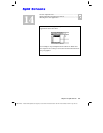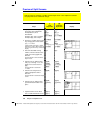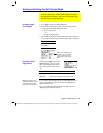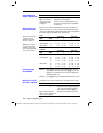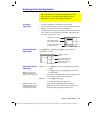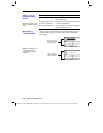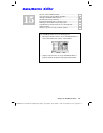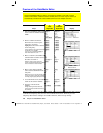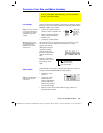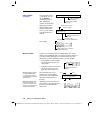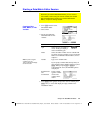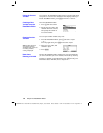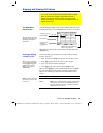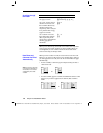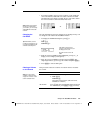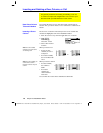
Chapter 15: Data/Matrix Editor 239
15DATAMA.DOC TI-89/TI-92 Plus: Data/Matrix Editor (English) Susan Gullord Revised: 02/23/01 1:10 PM Printed: 02/23/01 2:17 PM Page 239 of 16
A list is a series of items (numbers, expressions, or character strings)
that may or may not be related. Each item is called an element. In the
Data/Matrix Editor, a list variable:
¦
Is shown as a single column of
elements, each in a separate cell.
¦ Must be continuous; blank or
empty cells are not allowed
within the list.
¦
Can have up to 999 elements.
On the Home screen (or anywhere else you can use a list), you can
enter a list as a series of elements enclosed in braces { } and
separated by commas.
A
lthough you must use
commas to separate
elements on the entry
line, spaces separate the
elements in the history
area.
To refer to a specified
element in a list, use the
format shown to the
right.
list1[1]
A data variable is essentially a collection of lists that may or may not
be related. In the Data/Matrix Editor, a data variable:
¦ Can have up to 99
columns.
¦ Can have up to 999
elements in each
column. Depending on
the kind of data, all
columns may not have
to be the same length.
¦ Must have continuous columns; blank or empty cells are not
allowed within a column.
Overview of List, Data, and Matrix Variables
To use the Data/Matrix Editor effectively, you must understand
list, data, and matrix variables.
List Variable
Note: If you enter more than
one column of elements in a
list variable, it is converted
automatically into a data
variable.
Tip: After creating a list in
the Data/Matrix Editor, you
can use the list in any
application (such as the
Home screen).
Data Variable
Note: For stat calculations,
columns must have the
same length.
Column title
and header
cells are not
saved as
part of the
list.
Element number
(or index number)
Name of list variable



